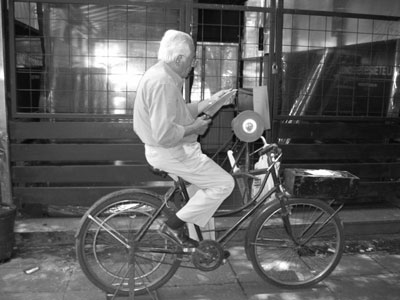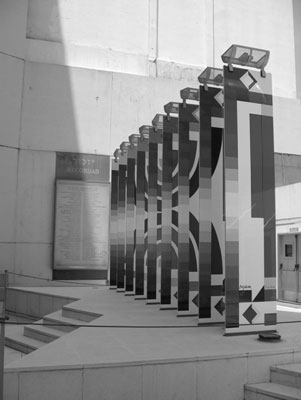Much to do in BA
When one goes to Buenos Aires, the culture one most experiences is the culture. Yes, there are fine museums and interesting structures. However, it is walking through the barrios, going to a tango salon and the theater, visiting the street markets and enjoying a great variety of wonderful food and wine that makes Buenos Aires such a delight.
On our December ’04 trip to Argentina’s capital, we watched tango being performed in tango salons, in theaters and in the streets and even took tango lessons (June ’06, pg. 16). But what else is there to do in B.A.?
Visit Recoleta cemetery to see very old and very contemporary mausoleums. I know it sounds strange, but this “city of the dead” is a history lesson in itself. Evita Perón is buried there, and flowers and notes are tucked in the grill of the door of her resting place.
The MALBA is an excellent contemporary art museum in a beautiful building showing well-known Latin American artists. The Museo de Bellas Artes, besides its 19th- and 20th-century Latin American art, houses interesting Rodin and European Impressionist works.
If you speak Spanish, there are many theater performances you can attend. Tour the famous Teatro Colón and see where the sets and costumes are made and stored. If you can, attend a performance there as well.
The parks in Palermo make for a good walk.
Certainly, a visit to the San Telmo and Recoleta street markets is a good way to enjoy an afternoon. If you like antiques, you will go crazy in San Telmo.
Shopping is a delight in B.A., especially for leather goods (including wallets, shoes and handbags); cashmere and llama sweaters; high fashion from new Argentine designers, and silver.
The government-sponsored volunteer guides called cicerones (Cicerones de Buenos Aires, J.J. Biedma 883 [1405] Buenos Aires, Argentina; phone +54 11 4330 0800 or 4431 9892 or visit www.cicerones.org.ar) may be able to put together a tour designed around your special interests, whatever they are, and there is no charge for their services. We wanted to explore the Jewish community (reportedly the fifth largest in the world), and cicerone Elvira Levy, a local, was assigned to spend the day with us. It was a unique opportunity to learn not only about the Jewish community but about day-to-day life in Buenos Aires. We didn’t tip Elvira, but she found us a kosher restaurant as part of the tour and we did treat her to lunch.
Our time was limited, so we could not experience much of Argentina’s varied environments. We did take a break from the city and flew to Iguazú Falls for two nights. They are spectacular and the sheer volume of water is amazing. Niagara Falls looks like a dripping faucet compared to the many cascades at Iguazú. We also enjoyed spending some time in the little town of Puerto Iguazú, seeing the point where rivers join and Paraguay, Brazil and Argentina come together, and enjoying a lovely dinner.
Through www.hotels.net, we had arranged a Buenos Aires package at $2,200 for two, including round-trip airfare from Denver and five nights at LoiSuites Recoleta hotel. Separately, we spent three additional nights at LoiSuites Recoleta at $127 per night. We highly recommend this hotel.
Round-trip airfare from B.A. to Iguazú and a 2-night Sheraton Internacional Hotel package, arranged through a local agency, Kraft Travel, cost $400 per person.
The average taxi fare in B.A. was $2-$3. An average dinner, with excellent food, wine and service, cost $30-$60 for two.
MARSHA CAPLAN
Boulder, CO


